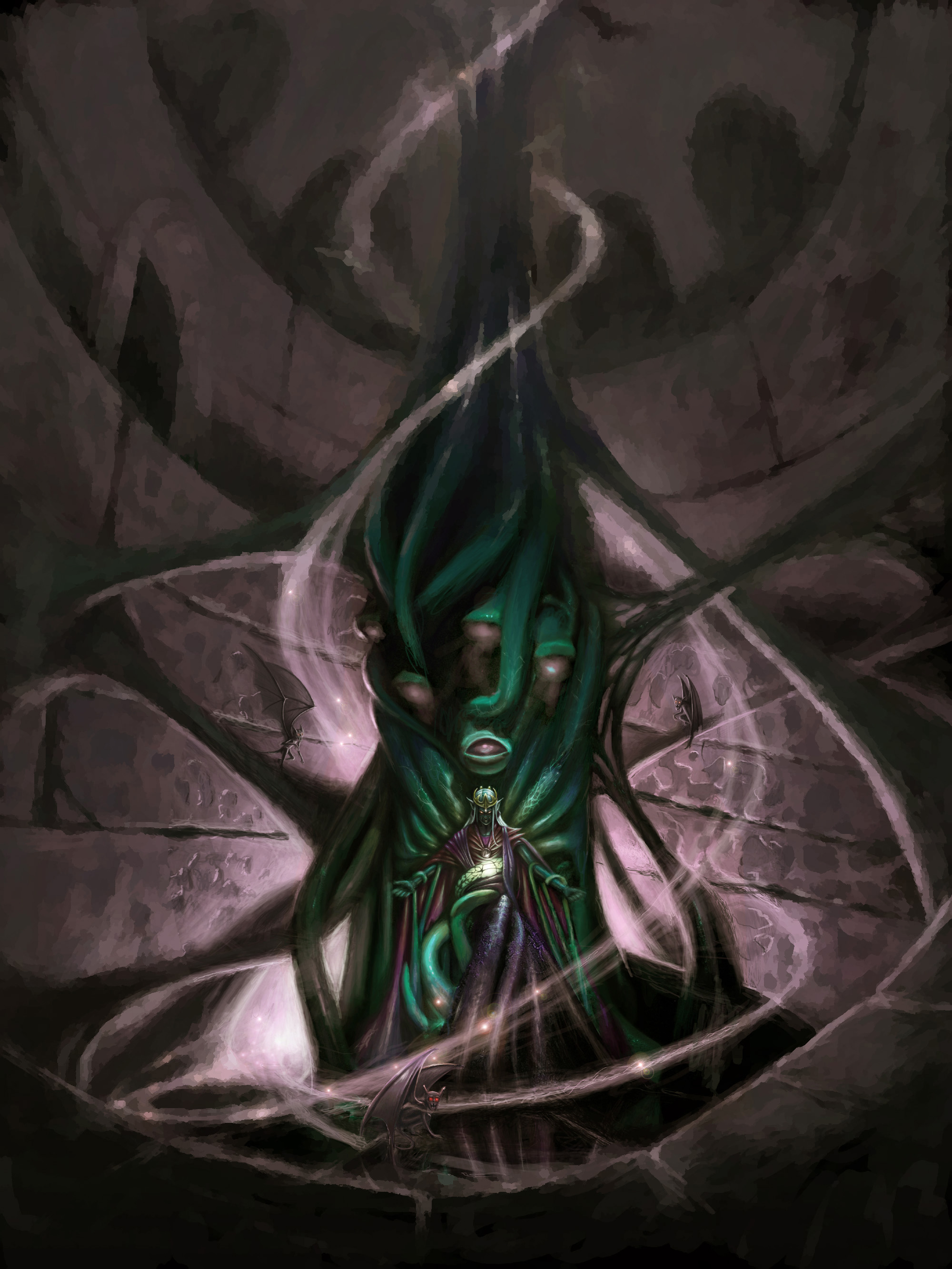The folks over at Roving Band of Misfits wrote a post that got me thinking. We know it is always a dangerous thing when a DM starts thinking. They proposed a new method of creating solo monsters with a dynamic that changes over the course of a combat. Specifically, the idea was that instead of it being one one monster with a ton of hit points, why not create two monsters that are overlaid and both take actions while one creature takes damage at a time. Once one creature is killed, they only get one set of actions which creates a dynamic change in the combat.
For the final battle of my adventure, I thought I'd give it a whirl. Solos have had a lot of problems for a LOOONG time and the technique presented by the Band of Misfits was a novel approach to the concept. Implementing the idea is pretty simple and they detail the principles behind the idea in their blog post linked above.
 |
| image from Deviant artist Pale Drow |
For me, this worked in to a major battle sequence I put together involving a Drow king (I know, right?!?) who had usurped the Efreet of the City of Brass while allied with Tiamat's forces. I used two templates to construct the Solo beastie. I started the idea that basically due to his new mastery of the elemental forces of fire, the drow king had taken command of the fire armies and formed a spectral suit of armor made of the flesh of Efreet noble. So I used an Efreet elite as the first stage of the solo monster. His AC is higher and he has a fly speed, but as he takes damage his hitpoints will be depleted. His hardened fleshy armor slows him down a bit and he is less reflexive too. Once he is bloodied, certain effects kick in and he is constantly getting worn down until those final hitpoints are chipped away and all that is left is the final stage of the creature.
To make matters worse, he will have a second initiative account as the Drow King himself (also an elite Drow taken from Monster Manual 3). While the first stage is active, both monsters will be making attacks against the party which is a pretty dangerous threat. They will also be unable to do damage to the Drow King until they damage his elemental armor and once that fall away, he will lose an initiative action making him more desperate and more dangerous. I cranked his damage when this happened to decrease the number of actions taking place, but increase the threat making him feel more deranged and more dangerous as he got backed into a corner. At least that is all how I designed him to operate as a monster. I specifically chose two elites that were also leaders and had aura effects to give buffs to their allies (in this case a horde of elementally imbued Drow minions who were rampaging against the party attempting to catch them alight with flames from the elemental chaos), but as always happens things don't always go according to plan.
As the encounter panned out, the elemental minions didn't survive very long. One well placed Chain Lightning spell nuked the entire room and killed all, but two of the minions. So the leader effects weren't that useful as a whole. The effect of the change was pretty cool. When the first creature's set of hit points were reduced and it went from being bloodied to being non-bloodied and the defense numbers were suddenly really different, the party really responded to that. It was dynamic and different and I like how that played out. The one thing that didn't work so good was the sheer quantity of hit points. This was entirely a mistake on my part. Both halves had the same massive bucket of hitpoints where I probably should have had the Efreet starting creature have the bulk of hit points so that as soon as he dropped and lost his magical armor he would have felt more like a glass cannon. The fact that he had just as many hit points to go after the first piece disappeared made for a slug match of a combat. That's really a different conversation and part of the design dynamic of Epic Tier. Overall generating a Solo creature that is a real threat in this level of play was really interesting in a story sense, but I'm definitely giving it another crack to see how it would play out with more dynamic hit point totals.
The next time I try using it, I'm going to have a gnome creature (leveled up from heroic) whose spirit is trapped in time and stuck inside an iron golem construct. I'm going to balance the hit points more skewed the way they should with the gnome creature with less hit points up front and once defeated the iron golem with more hit points to deplete. Combining a brute and a lurker should prove interesting. More on that later.

No comments:
Post a Comment